1904 DE DION BOUTON 6hp MODEL Y TWO SEATER Registration No. Tba Car No. 341 Engine No. 15004 Blue with red leather upholstery Engine: Single cylinder water-cooled, 90mm x 110mm bore & stroke (700cc). Automatic inlet valve, Transmission: 3-speed & reverse gearbox with expanding clutches, integral final drive, De Dion rear axle. Chassis: tubular steel, front semi-elliptic springs, rear three-quarter elliptic, internal expanding brakes on rear wheels and transmission. Right hand drive. When Count Albert De Dion began making motor vehicles in the 1880s he had clear objectives in mind: he wanted to produce cars that were simple and reliable, with adequate performance, and inexpensive. Although making some fine steam-powered vehicles, the firm of De Dion Bouton et Trepardoux could not really meet the Count's objectives. However, once Georges Bouton developed a high-speed internal combustion in 1895 the seed was sown that would rapidly grow to satisfy that which De Dion wanted. First came the motor tricycles that were mass produced in their thousands and then a four-wheeled car, the famous and much copied vis-à-vis that initially appeared in 1899. This embodied all the essential De Dion Bouton principles that so well served the firm and its customers for many years to come. The only major change was to be the moving of the engine from a rear location to under a front bonnet in 1902. Enduring features were the high-speed water-cooled engine with reliable electric ignition, an efficient carburettor and simple but effective lubrication. Spurning the use of a sliding gearbox (or any form of belt or chain drive) Bouton developed a transmission system whereby each gear had its own individual expanding clutch that ensured smooth and near silent gear changes when a lever next to the steering column was pulled back or pushed forwards. The gearbox was firmly bolted to the tubular chassis and final drive was via a De Dion back axle (actually developed by Bouton's brother-in-law Charles Trepardoux back in the steam carriage days) whereby the rear wheels were carried on a dead axle beam and the drive went through live universally-jointed half shafts. Whilst not fast cars, early De Dion Boutons are lively, and light and easy to drive once their individualistic controls have been mastered. They not only sold in significant numbers for their day (over 2000 in 1902) but their high survival rate is a tribute to the soundness and quality of the products of this pioneering firm, the foresight of Count De Dion and the engineering talent of Georges Bouton. This car is a typical product of the French firm, ideally tailored to the British market of the time. The Y-type was for many years thought to be a 1905 model but it has now been conclusively established that the De Dion Bouton that the intrepid pioneer lady motorist Dorothy Levitt drove in the Small Car Trials organised by the Automobile Club of Great Britain & Ireland that took place in Herefordshire during August-September 1904 was a Model Y. Other Y-types are known to have been imported into the UK before the end of 1904. This history of this 101 year old Veteran De Dion Bouton is quite remarkable. One of many of these cars to be supplied to Australia, the car was originally delivered to the Sons of Gwalia Gold Mine in Western Australia where it was used as transport for staff between the nearby town of Leonora and the mine. The mine closed in 1912, but when re-opened in 1930 it was discovered in an administration office basement along with the mine's records from the late 1880s to 1912. At this time it was sold to a local resident and then sadly abandoned until discovered by a engineer. More an engineer than motoring enthusiast, he cut the front section of the chassis off and used the rear and wheels to make a horse-cart! Some years on, it was left to an enthusiast collector to re-unite the pieces, who after extensive research retrieved the engine from Meekatharra, and the front section from
1904 DE DION BOUTON 6hp MODEL Y TWO SEATER Registration No. Tba Car No. 341 Engine No. 15004 Blue with red leather upholstery Engine: Single cylinder water-cooled, 90mm x 110mm bore & stroke (700cc). Automatic inlet valve, Transmission: 3-speed & reverse gearbox with expanding clutches, integral final drive, De Dion rear axle. Chassis: tubular steel, front semi-elliptic springs, rear three-quarter elliptic, internal expanding brakes on rear wheels and transmission. Right hand drive. When Count Albert De Dion began making motor vehicles in the 1880s he had clear objectives in mind: he wanted to produce cars that were simple and reliable, with adequate performance, and inexpensive. Although making some fine steam-powered vehicles, the firm of De Dion Bouton et Trepardoux could not really meet the Count's objectives. However, once Georges Bouton developed a high-speed internal combustion in 1895 the seed was sown that would rapidly grow to satisfy that which De Dion wanted. First came the motor tricycles that were mass produced in their thousands and then a four-wheeled car, the famous and much copied vis-à-vis that initially appeared in 1899. This embodied all the essential De Dion Bouton principles that so well served the firm and its customers for many years to come. The only major change was to be the moving of the engine from a rear location to under a front bonnet in 1902. Enduring features were the high-speed water-cooled engine with reliable electric ignition, an efficient carburettor and simple but effective lubrication. Spurning the use of a sliding gearbox (or any form of belt or chain drive) Bouton developed a transmission system whereby each gear had its own individual expanding clutch that ensured smooth and near silent gear changes when a lever next to the steering column was pulled back or pushed forwards. The gearbox was firmly bolted to the tubular chassis and final drive was via a De Dion back axle (actually developed by Bouton's brother-in-law Charles Trepardoux back in the steam carriage days) whereby the rear wheels were carried on a dead axle beam and the drive went through live universally-jointed half shafts. Whilst not fast cars, early De Dion Boutons are lively, and light and easy to drive once their individualistic controls have been mastered. They not only sold in significant numbers for their day (over 2000 in 1902) but their high survival rate is a tribute to the soundness and quality of the products of this pioneering firm, the foresight of Count De Dion and the engineering talent of Georges Bouton. This car is a typical product of the French firm, ideally tailored to the British market of the time. The Y-type was for many years thought to be a 1905 model but it has now been conclusively established that the De Dion Bouton that the intrepid pioneer lady motorist Dorothy Levitt drove in the Small Car Trials organised by the Automobile Club of Great Britain & Ireland that took place in Herefordshire during August-September 1904 was a Model Y. Other Y-types are known to have been imported into the UK before the end of 1904. This history of this 101 year old Veteran De Dion Bouton is quite remarkable. One of many of these cars to be supplied to Australia, the car was originally delivered to the Sons of Gwalia Gold Mine in Western Australia where it was used as transport for staff between the nearby town of Leonora and the mine. The mine closed in 1912, but when re-opened in 1930 it was discovered in an administration office basement along with the mine's records from the late 1880s to 1912. At this time it was sold to a local resident and then sadly abandoned until discovered by a engineer. More an engineer than motoring enthusiast, he cut the front section of the chassis off and used the rear and wheels to make a horse-cart! Some years on, it was left to an enthusiast collector to re-unite the pieces, who after extensive research retrieved the engine from Meekatharra, and the front section from


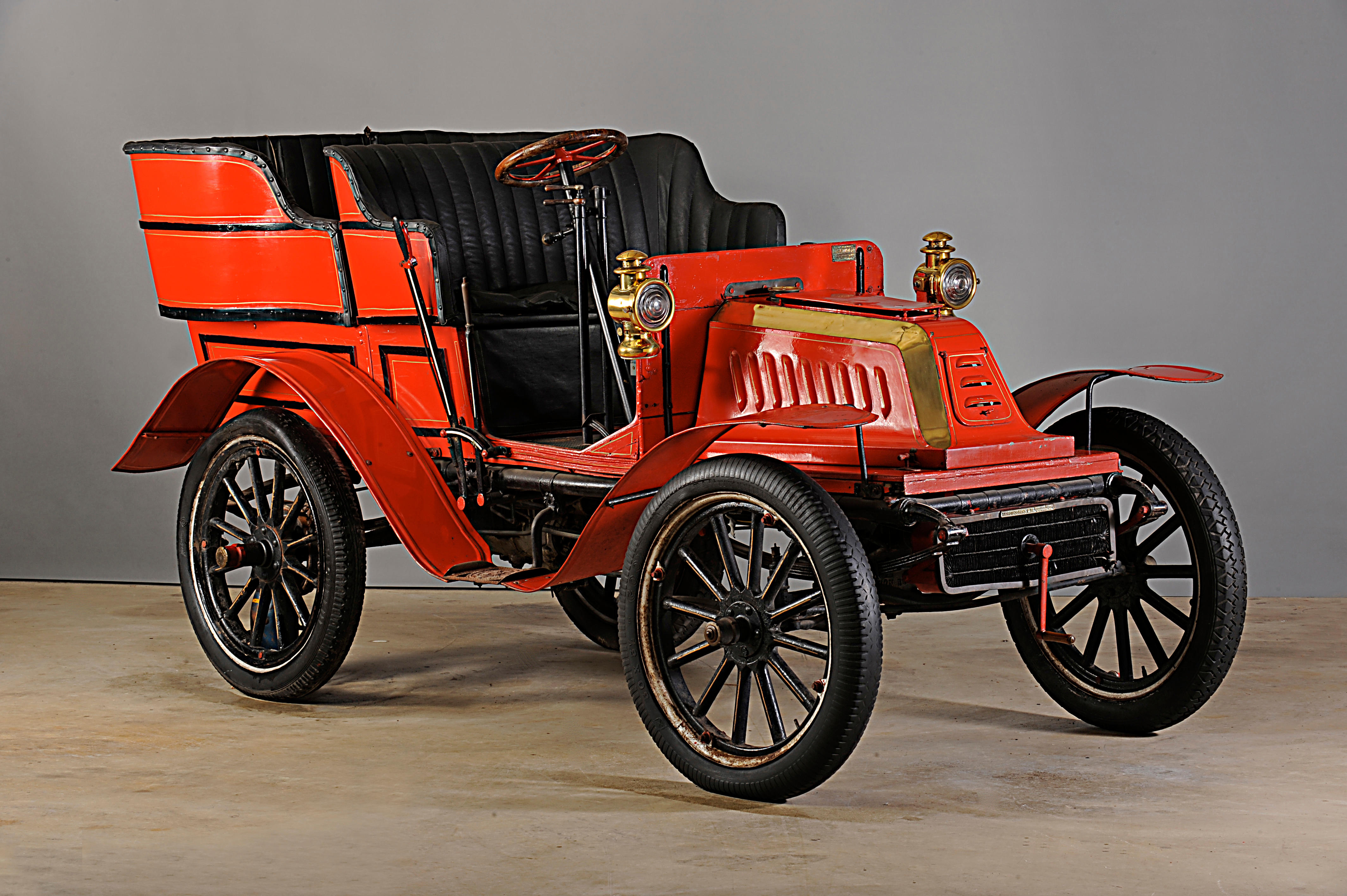
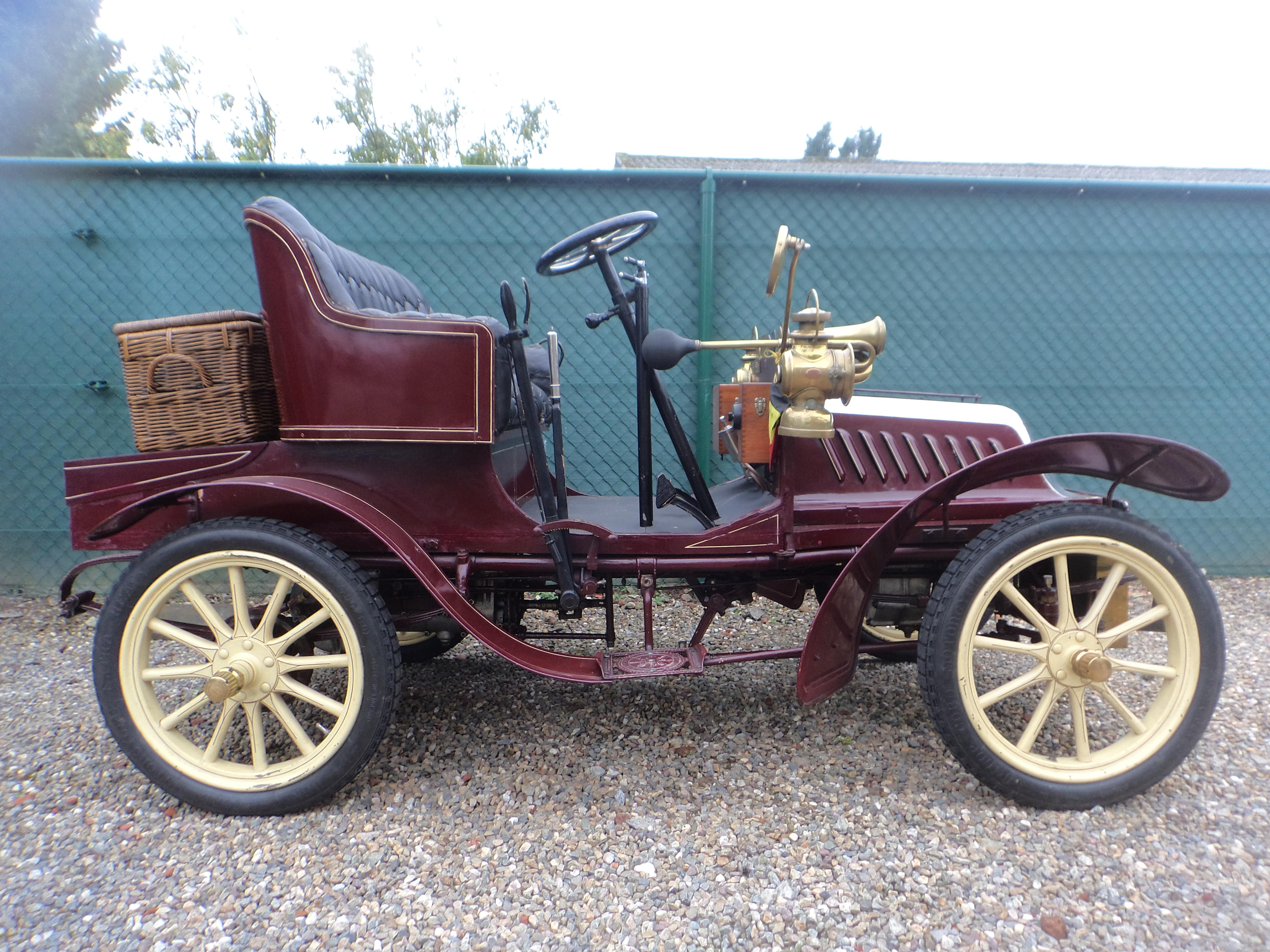
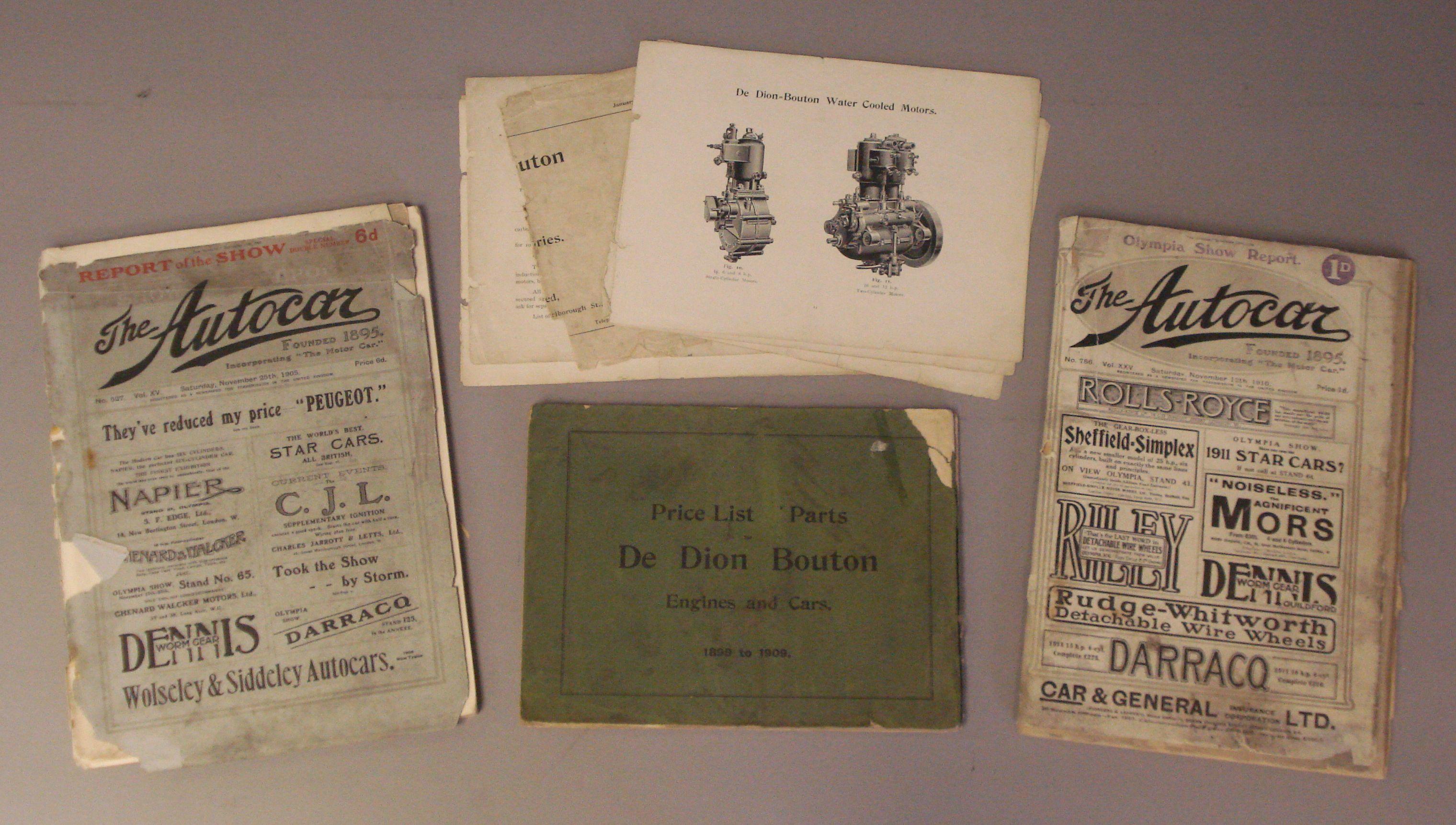

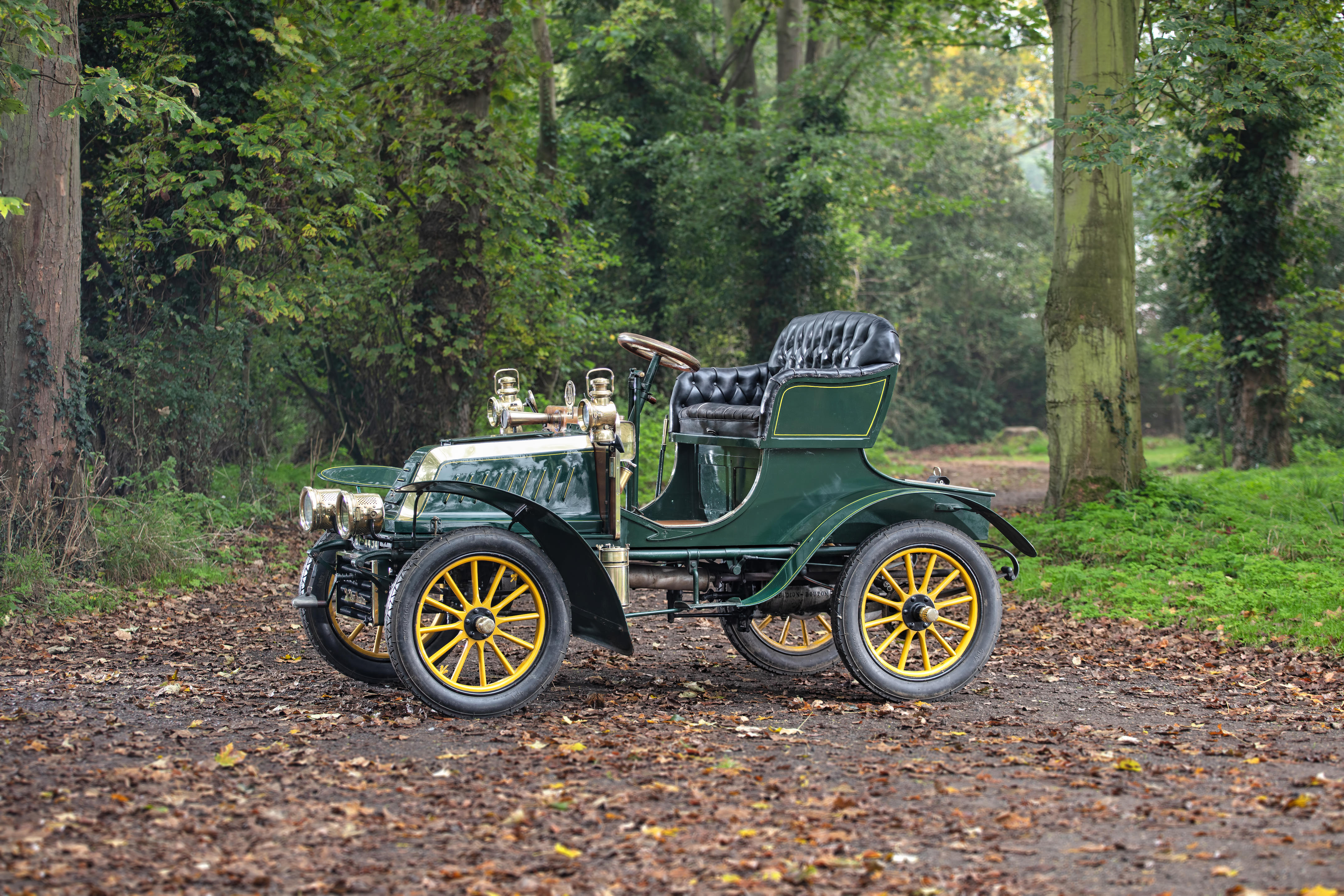

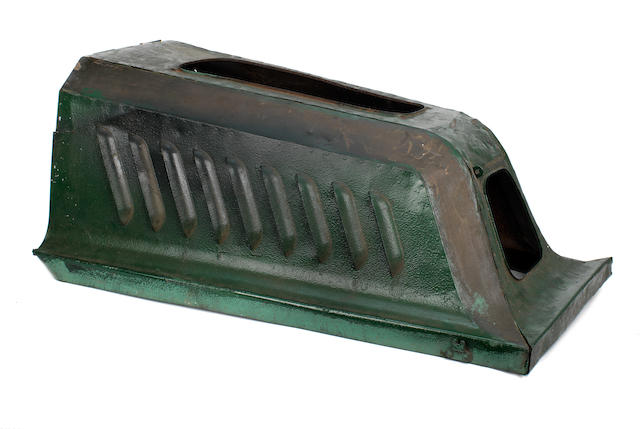
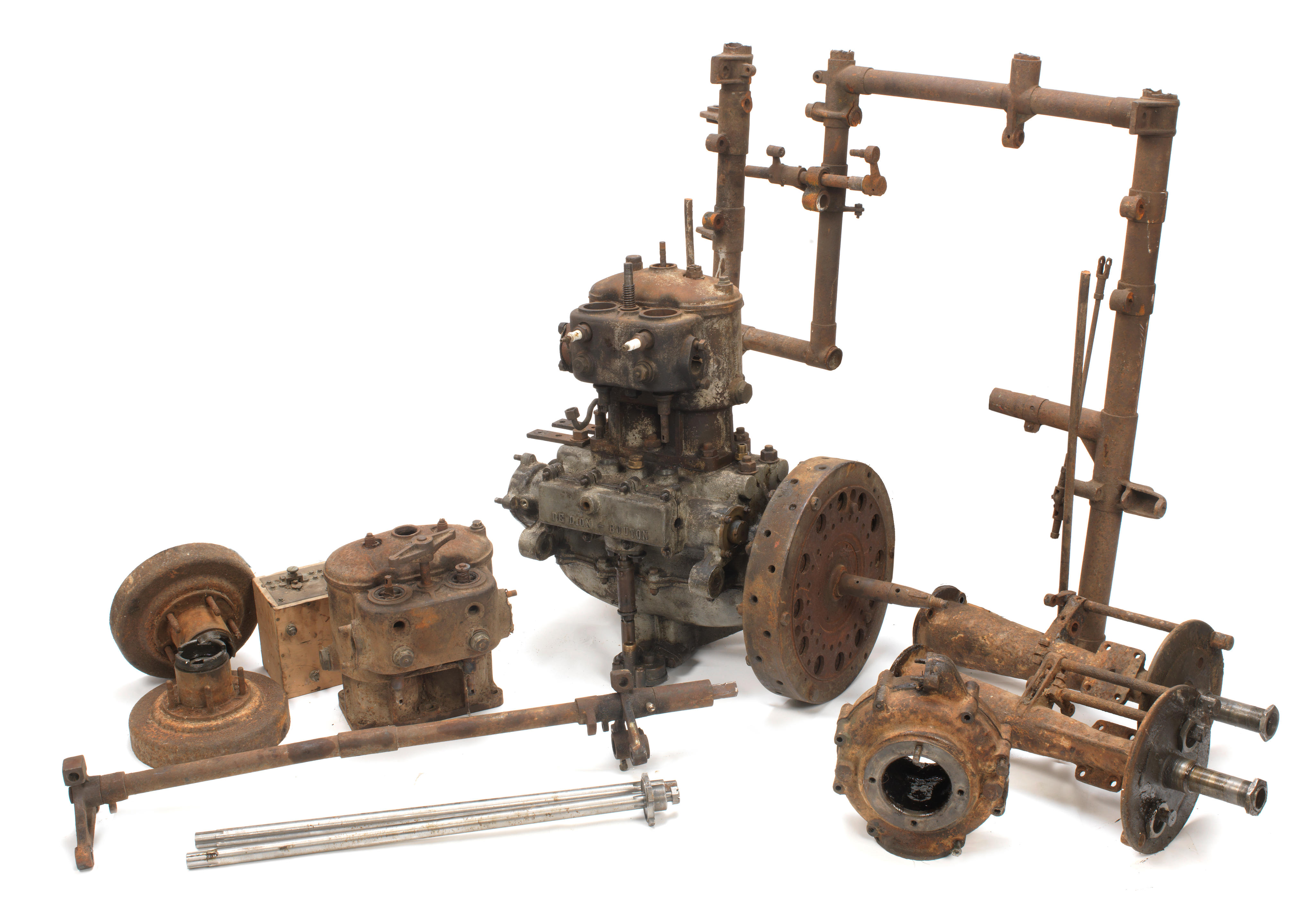

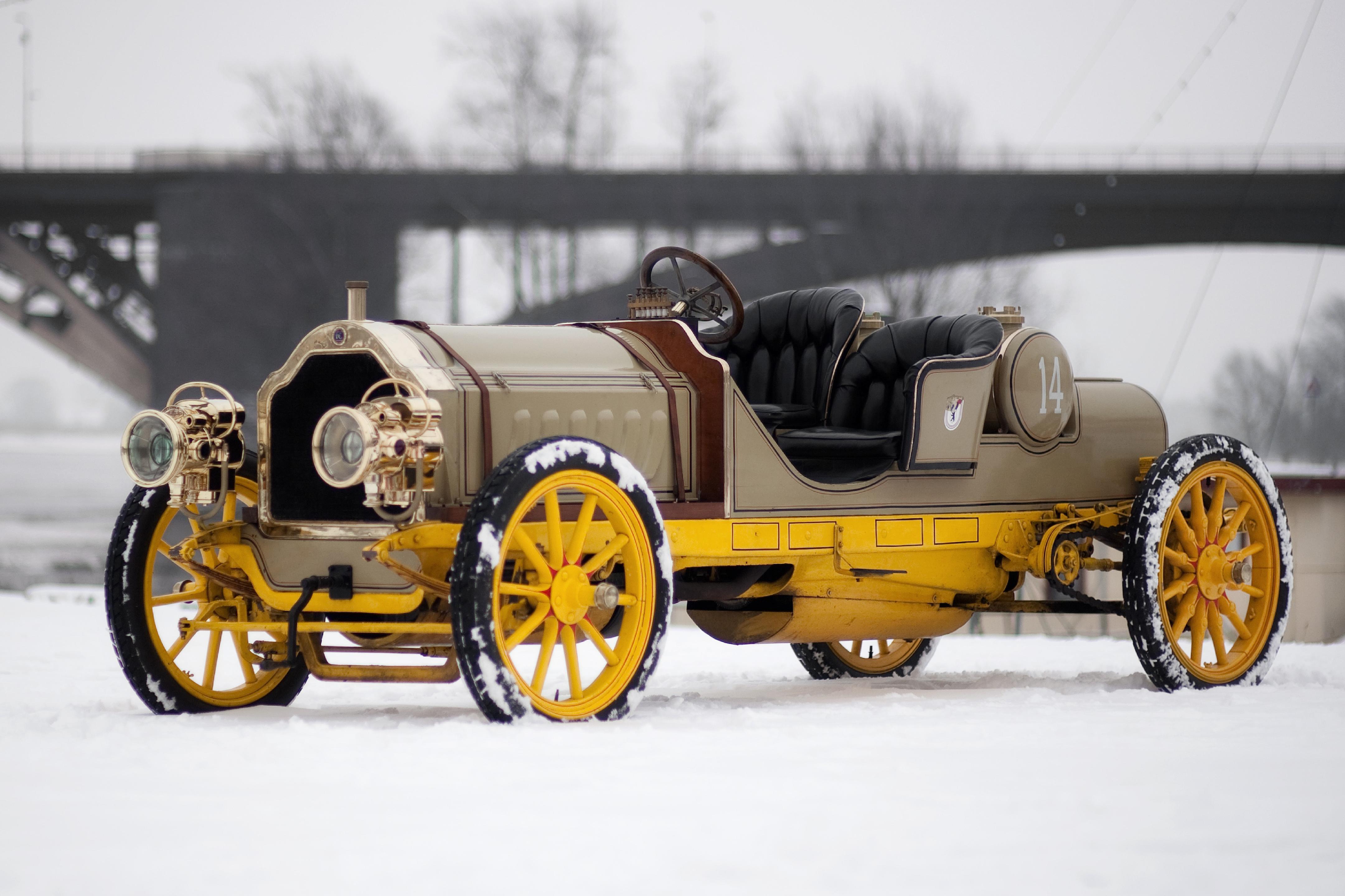


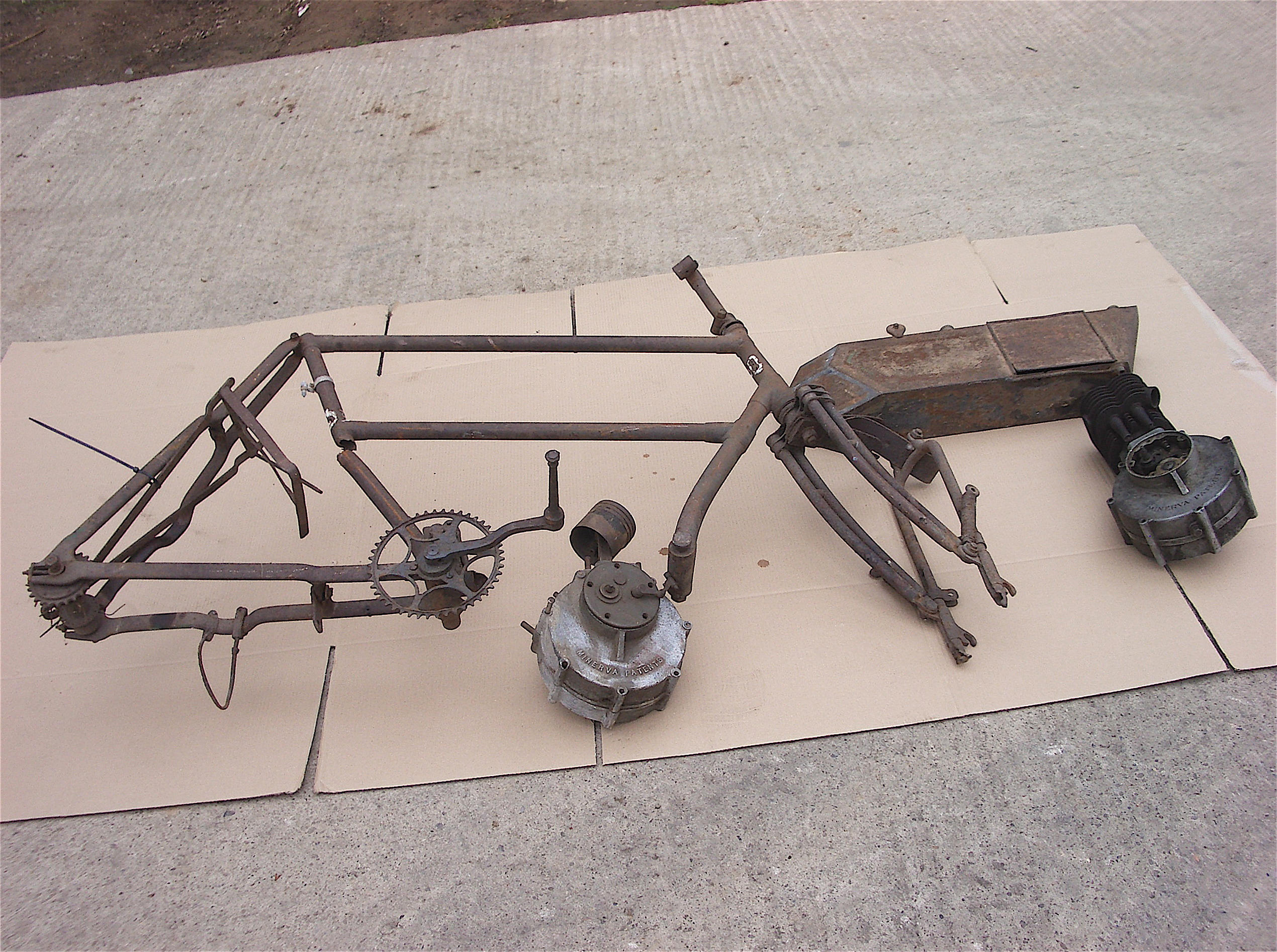
Testen Sie LotSearch und seine Premium-Features 7 Tage - ohne Kosten!
Lassen Sie sich automatisch über neue Objekte in kommenden Auktionen benachrichtigen.
Suchauftrag anlegen